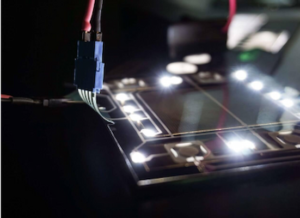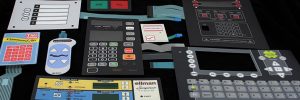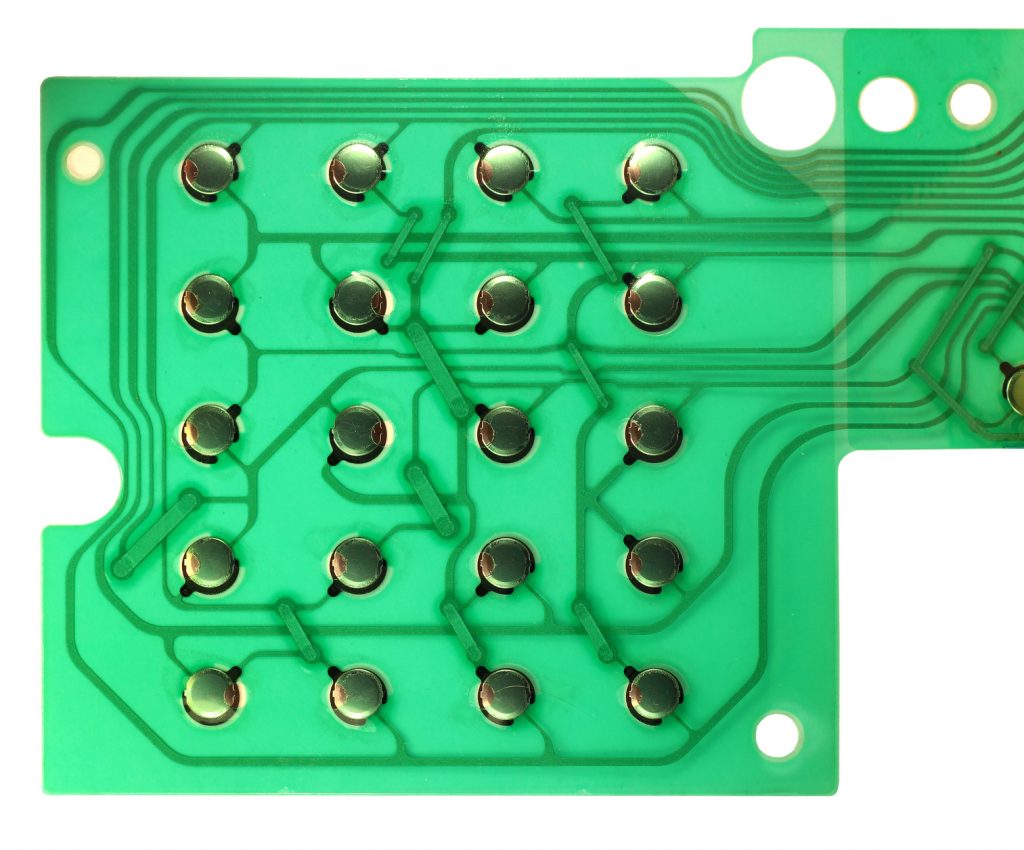Have you ever wondered, “What are tactile switches?” In an age where technological innovation shapes the business landscape, understanding the versatility and advantages of tactile switches is crucial for businesses seeking to stay ahead. Tactile membrane switches, a cutting-edge technology, offer a wealth of benefits that can revolutionize the way your business operates.
In essence, they are user-friendly switches that allow circuit control, with conductive ink typically filled with graphite, silver, or copper used in their creation. Tactile switches span a wide range of complexity, from basic lighting controls to sophisticated switches integrated with computer systems.
From durability and space-saving designs to enhanced user experiences and customization options, this blog will delve into the world of tactile membrane switches and illustrate why they are a game-changer for your organization. But first, let’s discuss the differences between tactile and non-tactile membrane switches.
The Two Types of Membrane Switches

Tactile and non-tactile membrane switches are two distinct types of user interface components commonly used in electronic devices and equipment. They serve as buttons or switches that enable users to interact with a device by pressing them.
What Are Tactile Switches?
Tactile switches are designed to provide physical feedback to the user when they press the switch. When you press a tactile membrane switch, you can feel a noticeable “click” or “bump.” This tactile feedback confirms that the switch has been actuated, making it easier for the user to know when the command or function has been activated.
They often incorporate a dome-shaped or metal dome under the switch’s surface, which collapses upon pressing, creating tactile feedback. This tactile sensation is particularly useful in applications where users need to be sure they have made a selection, such as on computer keyboards or remote controls.
Tactile switches are prevalent in devices where precise input or a clear confirmation of user interaction is necessary.
What Are Non-Tactile Switches?
On the other hand, non-tactile switches do not provide the same physical feedback when pressed. When you push a non-tactile membrane switch, it doesn’t offer a distinct “click” or tactile sensation. Instead, actuation occurs more smoothly without noticeable feedback.
Non-tactile membrane switches are often designed with a flatter, smoother surface and may consist of multiple layers of flexible materials. They are commonly used in applications where a low-profile design and silent operation are more important than tactile feedback, such as in thin consumer electronics like smartphones and tablets.
While non-tactile switches lack the physical confirmation of a click, they are appreciated for their sleek design and quiet operation.
6 Benefits of Tactile Membrane Switches

1. Durability: A Cost-Effective Solution
Tactile membrane switches boast exceptional durability, outlasting traditional switches. These switches are engineered to withstand the rigors of daily use and the challenges posed by various working environments. Their exceptional resilience translates into several tangible benefits for your business.
First and foremost, the extended lifespan of tactile membrane switches means that you’ll experience fewer instances of switch failure or wear and tear. This directly results in cost savings, as you won’t have to invest continually in replacements or repairs, as is often the case with less durable alternatives.
Also, the longevity of tactile membrane switches allows businesses to use them extensively without the constant worry of overuse leading to premature failure. This is a significant advantage for companies that rely on these switches as part of their daily operations, as they can operate worry-free, knowing that the switches are built to last.
2. Space-Saving Innovation
These switches, with their compact and streamlined design, not only optimize the physical space within a device but also grant designers an unprecedented level of creative freedom when it comes to constructing and integrating them into various products.
For smaller businesses and startups, where every inch of space counts, the value of tactile switches cannot be overstated. With limited real estate for their devices and equipment, they can make the most of the available area without sacrificing functionality. This means that smaller businesses can design and produce compact, efficient products without compromising on performance.
What’s remarkable is that this space efficiency is not exclusively beneficial to smaller enterprises. Larger businesses, with expansive office spaces and more substantial equipment, can also reap the rewards. Tactile membrane switches are so compact that they don’t require significant alterations to the overall layout of offices or control panels.
Instead of having to accommodate bulky traditional switches, businesses can seamlessly integrate these sleek, low-profile switches into their existing setups. This saves time, resources, and minimizes the need for structural changes, enhancing efficiency across the board.
3. Sealed for Protection and Efficiency
Many tactile membrane switches feature an integrated seal, offering robust protection against environmental factors. This seal acts as a shield, enhancing the switch’s durability and safeguarding it from potential environmental damage—a level of protection not commonly found in other switch types.
The sealed design carries additional advantages, such as superior internal venting. This improved airflow management prevents overheating within the device, protecting vital circuits and components.
By enhancing internal ventilation, tactile membrane switches not only ensure longevity but also contribute to the overall efficiency and optimal performance of the device.
4. Enhanced User Experience
Tactile membrane switches play a pivotal role in enhancing the user experience, making them a preferred choice in various consumer and industrial applications. Their unique tactile feedback, characterized by a discernible click or bump upon actuation, provides users with a reassuring confirmation of their input.
This feedback is particularly valuable in devices that incorporate touchscreens, such as smartphones and laptops, as it ensures that users can interact with precision and confidence. With an improved response rate, users can navigate menus, execute commands, and input data more effortlessly, contributing to an overall smoother and more enjoyable interaction with the device.
Moreover, the heightened responsiveness of tactile membrane switches enables users to multitask effectively, as the device can efficiently handle a variety of tasks without compromising its performance.
5. Tailor-Made Customization
The adaptability and tailor-made customization offered by tactile membrane switches open up a world of possibilities for both manufacturers and end-users. These switches stand out for their remarkable flexibility, allowing for the fine-tuning of various parameters to meet specific customer requirements.
This flexibility enables manufacturers to create products that align perfectly with customer needs, enhancing brand loyalty and differentiation. For end-users, customized switches deliver an improved experience, catering precisely to their specific requirements and preferences.
This dual advantage fosters customer satisfaction and spurs innovation in product design.
6. Clean and Maintenance-Friendly
Another notable advantage of using tactile membrane switches, as opposed to traditional mechanical switches, lies in their cleanliness. Mechanical switches often accumulate dirt and debris within the crevices of the device’s sockets, potentially compromising performance and durability.
Dirt can lead to damage to the internal circuits, causing a decline in overall device performance. In contrast, tactile membrane switches are immune to this issue due to their complete seal, preventing dirt from infiltrating and causing damage. This sealed design not only protects the switches but also simplifies the cleaning process, making maintenance easier when the switches get dirty.
Elevate Your Business With Hallmark Nameplate
With over 60 years of experience as a premier nameplate, graphic overlays, and membrane switch manufacturer, Hallmark Nameplate brings unparalleled expertise to every project. Whether you seek durability, customization, or innovative design, our seasoned team is dedicated to delivering excellence in every tactile solution.
Wondering if tactile switches are right for you? Request a FREE quote from our membrane switch experts. Elevate your user experience, enhance functionality, and ensure longevity—choose Hallmark Nameplate for your membrane switch needs.




